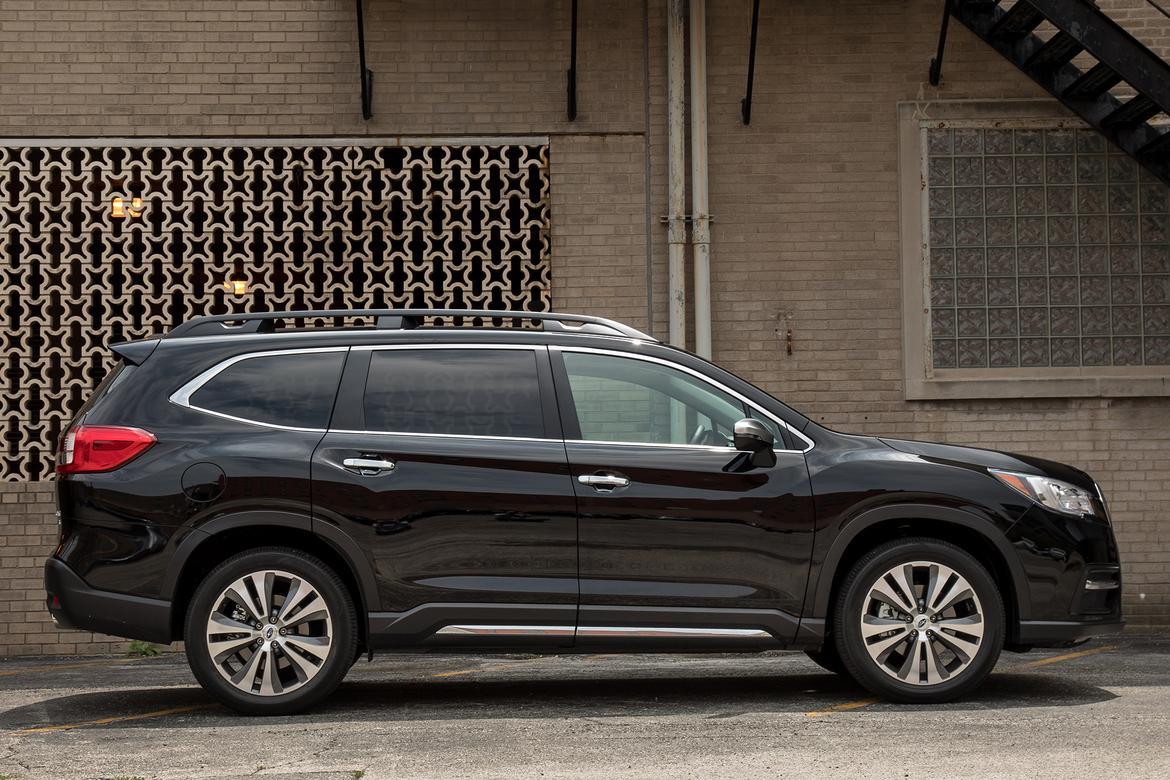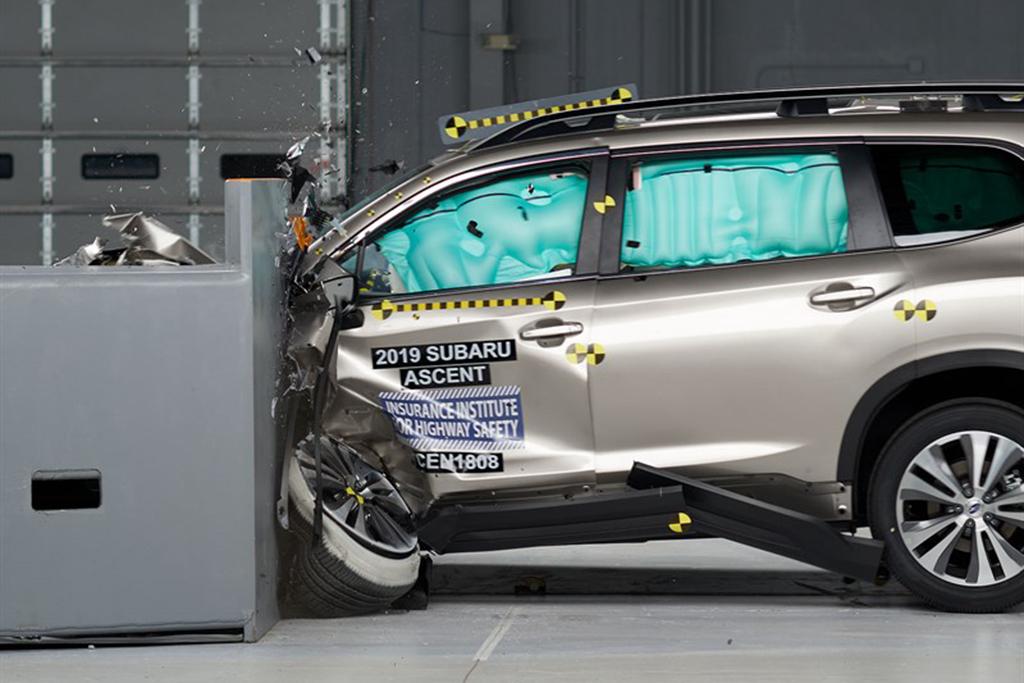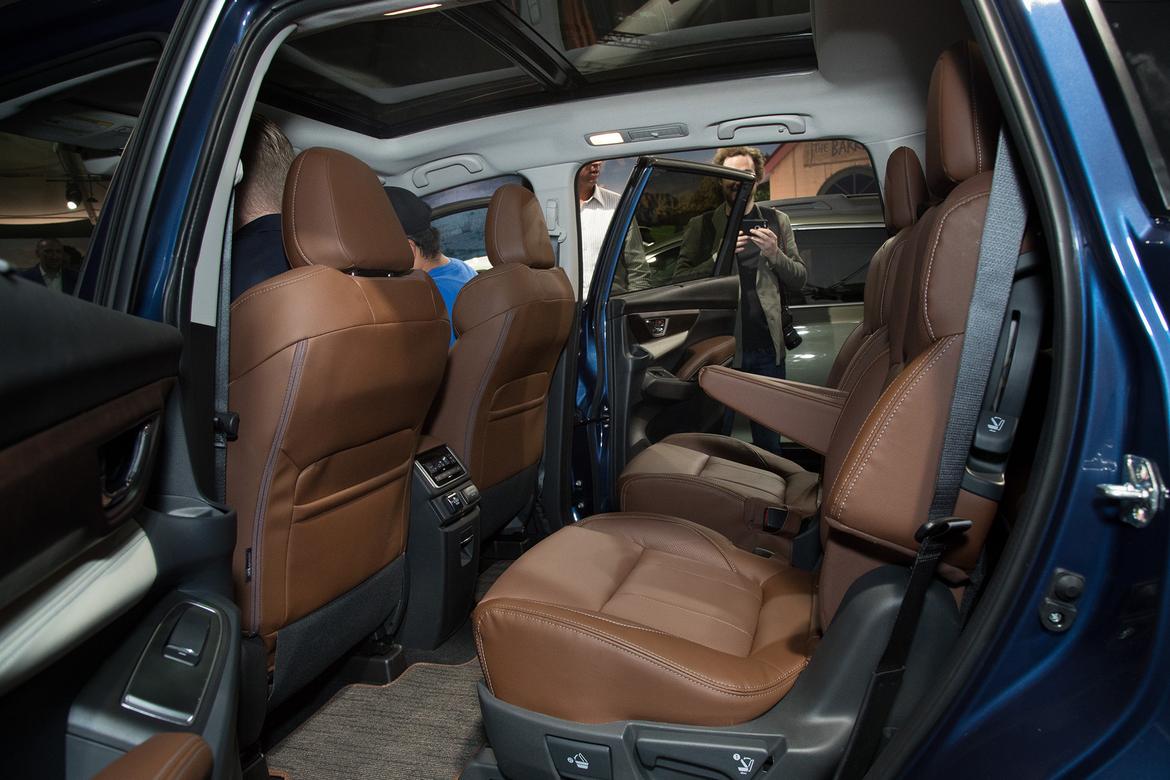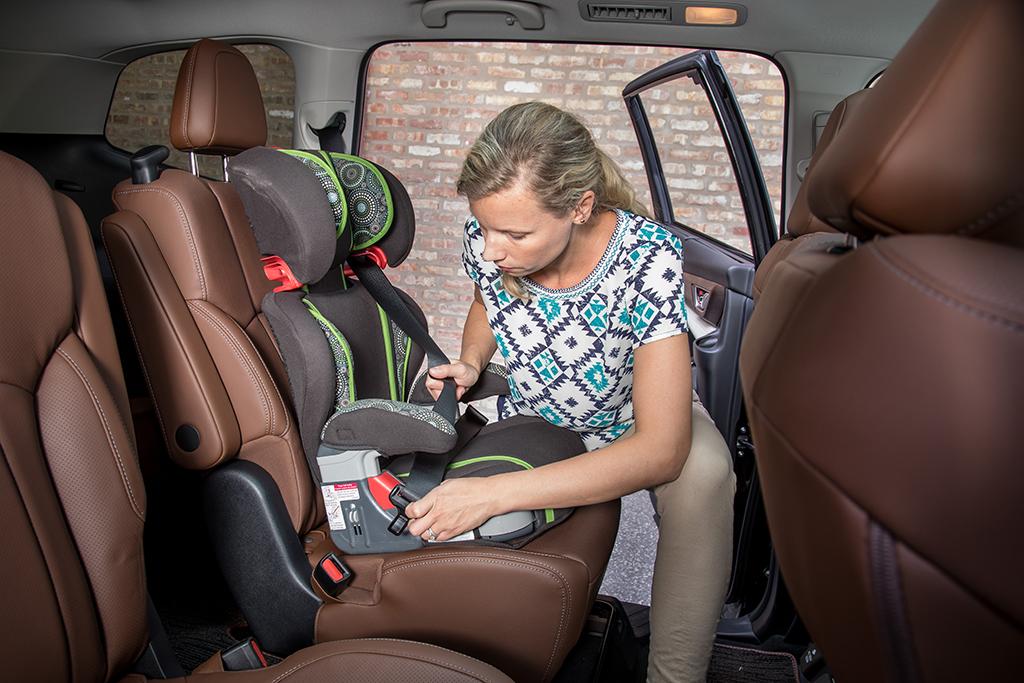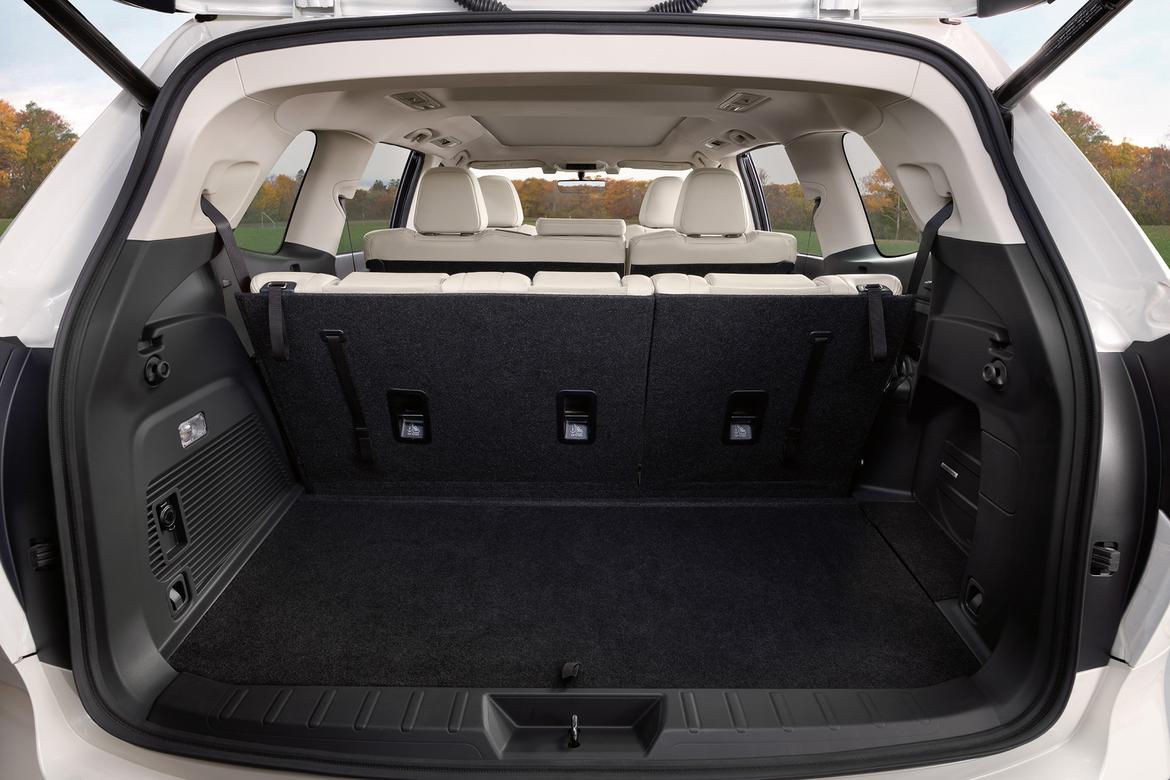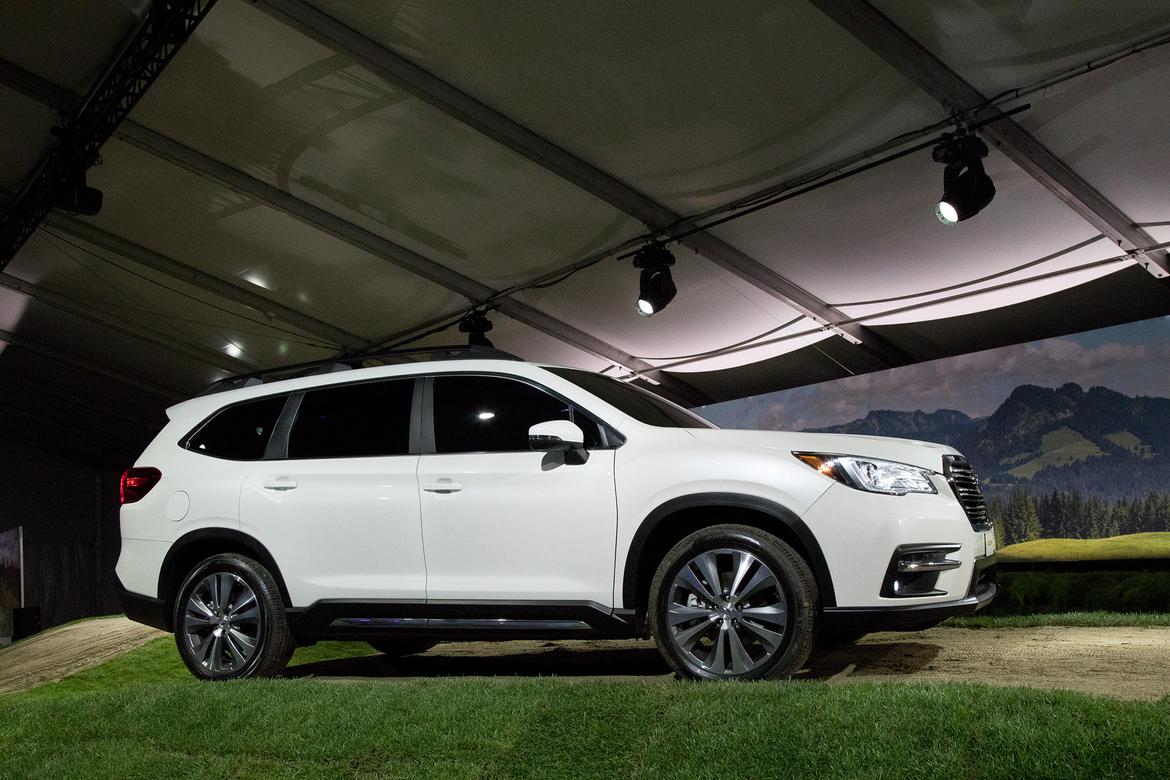The 2019 Subaru Ascent has been on sale since the summer of 2018, and in that time, we here at Cars.com have become pretty familiar with the three-row SUV. We even managed to put it in a head-to-head competition against our now-departed long-term test vehicle, the 2018 Volkswagen Atlas (R.I.P.), another three-row SUV we felt was good enough to be named our Best of 2018.
2019 Subaru Ascent Specs & Reviews
Find a 2019 Subaru Ascent Near You
With that wealth of experience in mind, we thought we'd point out some things about the Ascent that make it a standout choice for shoppers … and some things that might have you considering the competition. Be sure to read Cars.com reviewer Jennifer Geiger's comprehensive critique of the all-new SUV.
In the meantime, here are five things we like — and three … um, not so much — about the 2019 Subaru Ascent:
What We Like
1. Safety Ratings
In case you were wondering how much Subaru DNA is in a three-row SUV — especially after the five-years-defunct Tribeca performed so poorly in its time — the Ascent claimed the Insurance Institute for Highway Safety's highest award, Top Safety Pick Plus, as well as a five-star safety rating from the Nation Highway Traffic Safety Administration. (Note that to qualify for the former, the Ascent needs to be equipped with the LED headlights offered on Limited and Touring trims.)
IIHS image
2. Standard Features and Value
Aside from the headlights, though, the Ascent comes standard with a bevy of safety features thanks to Subaru's EyeSight technology. It also comes standard with all-wheel drive, no longer a given in the world of SUVs. All that for a starting price of less than $35,000 makes the Ascent a solid choice — and might even poach some Outback sales.
3. Interior Quality
In our comparison test against the Atlas, the Ascent won this category handily. While lower trim levels may not have the nicest materials, the Ascent at higher trim levels far surpasses the Atlas.
"I'm not wild about the Subaru Ascent's interior aesthetics; the center controls look as scattershot as an episode of 'Westworld.' But from a quality standpoint, Subaru plays the better hand," Cars.com reviewer Kelsey Mays said, comparing the Subaru to the VW. "The Ascent wraps stitched soft-touch panels in areas where the Atlas leaves an expanse of hard, cheap plastic — especially in the second row, where Volkswagen exhibits obvious cost-cutting."
Cars.com photo by Evan Sears
4. Ride Quality and Noise
It's the same story in this department, where the Ascent manages a much smoother and quieter ride than its chief competitor, winning these tests despite larger wheels and lower-profile tires. Cars.com reviewer Joe Bruzek had high praise for the quiet cabin in the Subaru, saying, "The Ascent keeps noise out of the cabin more like a luxury car than a three-row SUV."
5. Child Safety Seat in Second Row
The Ascent's second-row seats aced our Car Seat Check, earning praise for its taller and more rigid seat belt buckle stalks. Of the Ascent's second row, Geiger (also a certified child safety seat technician) said: "The all-wheel-drive Subaru Ascent seats seven or eight on captain's chairs or a second-row bench; we tested a captain's-chair model with leather seats and found its second row very accommodating for car seats."
Cars.com photo by Christian Lantry
What We Don't
1. Child Safety Seat in Third Row
In the third row, however, the Ascent's grades were less stellar, earning all B's. That doesn't mean the Ascent's third row is a deal-breaker, but if you're looking to put your kids' car seats in the third row, it's something to consider before purchasing. One of the chief issues was the cramped nature of the third row, which would prevent middle-seat passengers from using their seat belt if a forward-facing convertible seat were installed.
2. Cargo Room and Storage
That "cramped nature" extends to the rest of the Ascent, at least relative to competitors like the Atlas. The Volkswagen beat the Subaru handily in cargo and cabin storage testing and bested it in seating comfort in all three rows. As Cars.com reviewer Joe Bruzek said during testing, "The Atlas has no shortage of front room, which is where the Ascent came up short: My knee rubbed against the center console while my resting foot was cramped on the left side of the pedals."
Manufacturer image
3. Powertrain
The Ascent's turbocharged 2.4-liter four-cylinder engine is the only available powerplant and, while it might best competitors in fuel economy, our editors found it struggled when accelerating. They laid most of the blame for that at the feet of the Ascent's continuously variable automatic transmission, which reviewer Jennifer Geiger found "loud, coarse and unrefined." Reviewer Kelsey Mays also scorned the CVT: "With a slow ramp-up to higher revs and little in the way of faux upshifts or downshifts — a provision in most modern CVTs to simulate linearity between engine revs and your right foot — this reminds me of the technology's early days."
Cars.com photo by Evan Sears
Source: Read Full Article

